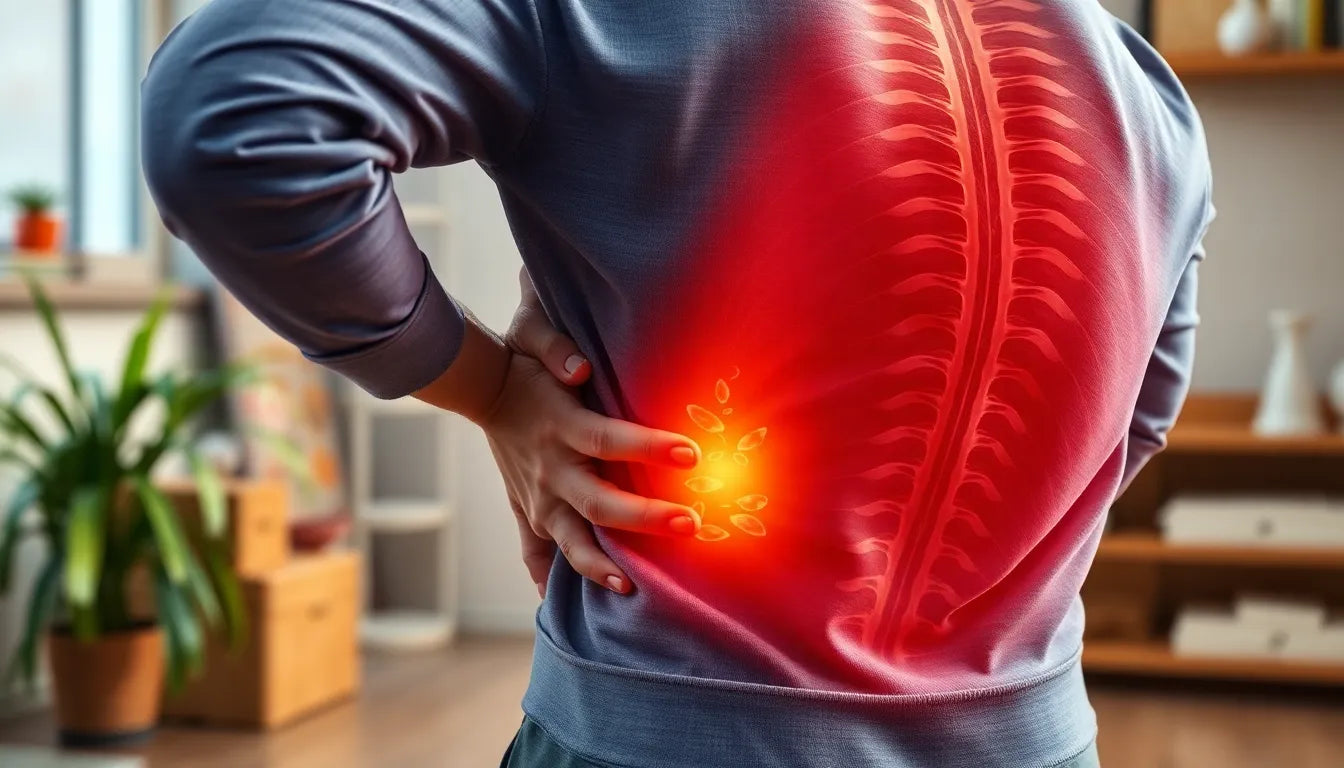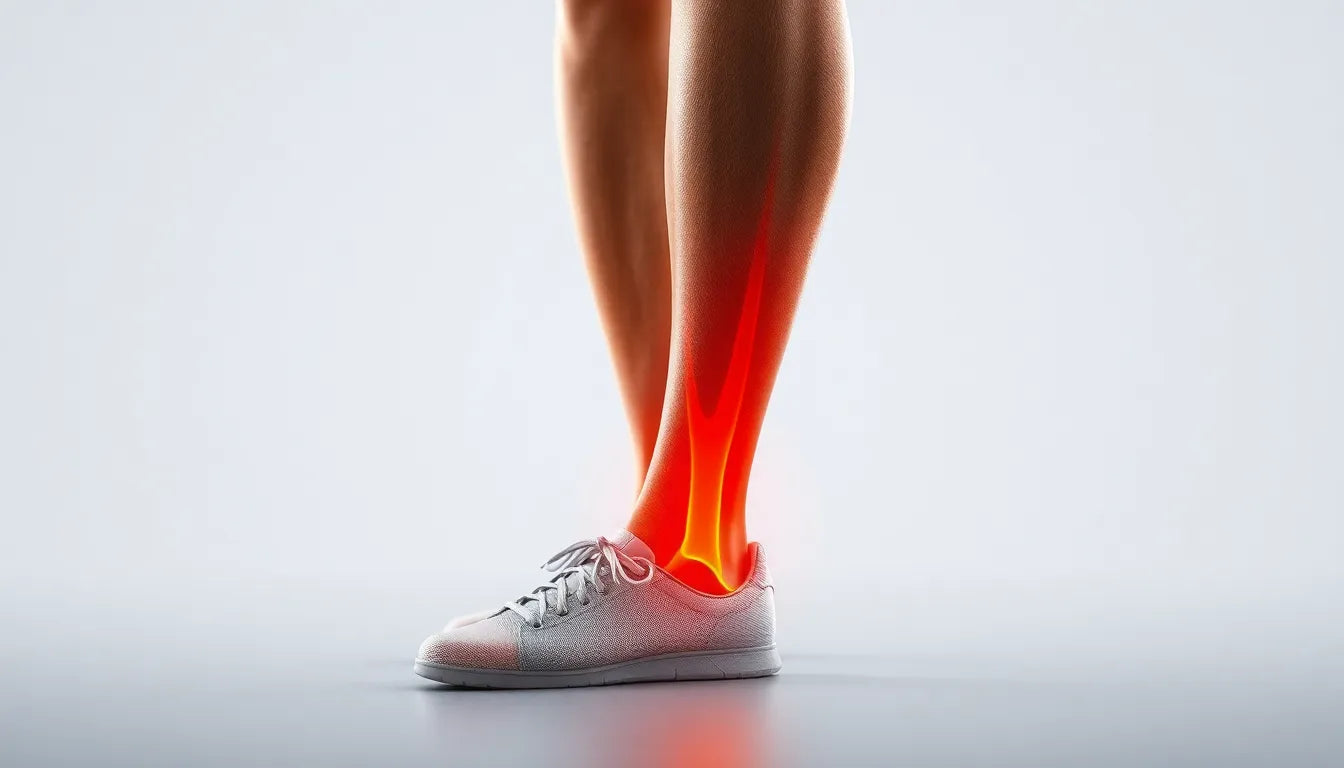Experiencing lower back pain after a fall is a common issue that many people face, and it can significantly impact daily life. This type of pain can create anxiety, not only due to the discomfort but also because of the fear of potential long-term damage. Whether it's bending over to pick up something or simply trying to sit comfortably, the persistent ache can be a constant reminder of the incident.
common causes of lower back pain after a fall
After a fall, the reasons for experiencing lower back pain can vary. Often, it results from a muscle strain or sprain, where the muscles or ligaments in the back are overstretched or torn. In more severe cases, the fall may lead to injuries such as disc herniation or even fractures, particularly if the spine was already compromised. Recognizing these causes is crucial in understanding the nature of your pain and determining the appropriate course of action.
understanding symptoms and seeking medical attention
Identifying the symptoms of lower back pain following a fall is essential. While some discomfort might be expected, certain symptoms should raise concern. These include sudden, severe pain, numbness, tingling, or weakness in the legs, and any loss of bladder or bowel control. Such symptoms may indicate serious nerve or spinal damage, necessitating immediate medical evaluation. Understanding when to seek professional help can prevent further complications and ensure a more efficient recovery.
setting the stage for relief and prevention
Addressing lower back pain after a fall involves more than just immediate relief; it's about finding both short-term and long-term strategies to manage and prevent future issues. In the following sections, we will explore effective methods for alleviating pain and strengthening the back, aiming to provide you with the tools needed to regain confidence and continue your daily activities without fear. By implementing these strategies, you can work towards not only managing your current pain but also preventing future incidents, ensuring a healthier, more resilient back.
understanding the causes and mechanisms of lower back pain after a fall
Lower back pain following a fall can be attributed to several physiological factors. Primarily, muscle overuse and sprains are common culprits. When you fall, the sudden impact can cause the muscles and ligaments in your lower back to stretch beyond their limits, leading to tears or strains. In more severe scenarios, the fall might result in a disc herniation, where the cushioning discs between your vertebrae protrude, pressing on nearby nerves. This can be particularly concerning if the spine is already weakened due to conditions like osteoporosis.
Moreover, the onset of pain can vary significantly. Some individuals may experience immediate discomfort, while others might notice symptoms developing over time as inflammation sets in. It’s crucial to monitor your symptoms, especially if pain radiates down your legs, as this could indicate nerve involvement, such as sciatica, which requires prompt medical attention.
symptoms that necessitate immediate medical evaluation
While some level of pain is expected after a fall, certain symptoms should not be ignored. Sudden, severe pain that doesn’t subside, numbness, tingling, or weakness in the legs are red flags. Additionally, if you experience any loss of bladder or bowel control, it could signify significant nerve damage or spinal injury. These symptoms warrant immediate medical evaluation to prevent further complications and to ensure that any serious conditions are promptly addressed.
acute and general treatment strategies
Managing lower back pain after a fall involves a combination of immediate and ongoing strategies. Initially, applying ice to the affected area can help reduce inflammation and swelling. Rest is essential, but it's equally important to avoid complete inactivity. Gentle movements should be encouraged to prevent stiffness, but strenuous activities, especially those involving heavy lifting or twisting, should be avoided.

Lumbar support belt
Adjustable belt combats lower back pain, stabilises and supports the lumbar region.
Support devices such as lumbar belts can provide stabilization, helping to alleviate pain during movement. Pain relief medications, as advised by a healthcare professional, can also be beneficial. However, it's crucial to follow medical guidance to avoid dependency or side effects.
Physiotherapy plays a vital role in recovery. A trained physiotherapist can guide you through exercises designed to rehabilitate the muscles, enhance flexibility, and strengthen the lower back. These exercises not only aid in recovery but also help prevent future injuries by improving posture and core strength.
ergonomic aids and preventive measures
Incorporating ergonomic aids into your daily routine can significantly aid in recovery and prevent further injury. Simple adjustments, such as using lumbar supports while sitting, can alleviate strain on your back. Ergonomic chairs and workstations are also beneficial, especially if you spend long hours sitting.
Preventive measures are equally important. Ensuring a safe environment by removing tripping hazards and using non-slip mats can reduce the risk of future falls. Regular exercise, focusing on core strengthening and flexibility, can enhance your resilience against back injuries.
By understanding the causes and mechanisms of lower back pain after a fall, recognizing critical symptoms, and implementing effective treatment and preventive strategies, you can manage your pain effectively and regain confidence in your daily activities. Remember, while immediate relief is important, long-term management and prevention are key to maintaining a healthy back and preventing future incidents.
long-term management and prognosis for lower back pain after a fall
Recovering from lower back pain after a fall often requires patience and a well-structured approach. The typical recovery timeline can vary based on the severity of the injury, but acute pain generally decreases within one to two months. However, the initial phase can be quite intense, requiring consistent care and attention to avoid further complications.
Long-term management involves a combination of strategies that focus on strengthening the back and improving flexibility. Regular physiotherapy sessions can be instrumental in this process, as they offer guided exercises tailored to your specific needs. These exercises not only aid in recovery but also play a crucial role in preventing future injuries by enhancing core strength and stability.

Men's Posture Shirt™ - Black
Patented shirt stimulates muscles, relieves pain, and improves posture awareness.
practical advice and tips for managing daily activities
Adapting your daily activities is essential to prevent exacerbating your condition and to promote healing. When lifting objects, always bend your knees and keep the object close to your body to minimize strain on your back. It's also important to maintain a safe environment at home by removing tripping hazards and using non-slip mats in areas prone to moisture.
Incorporating specific exercises into your routine can significantly aid your recovery. Gentle yoga or stretching exercises can help maintain flexibility and relieve tension in the lower back. Always consult with a healthcare professional or physiotherapist before starting a new exercise regimen to ensure they are suitable for your condition.
frequently asked questions
What should I do immediately after a fall if I suspect back injury?
Immediately after a fall, it is crucial to rest and apply ice to the affected area to reduce inflammation and swelling. Monitor your symptoms closely, and if you experience severe pain, numbness, or any loss of function, seek medical attention promptly.
How can I tell if my back pain is serious?
Back pain may be serious if it is accompanied by symptoms such as severe, persistent pain, numbness, tingling, weakness in the legs, or loss of bladder or bowel control. These signs indicate a potential nerve or spinal injury, and you should consult a healthcare professional immediately.
Are there specific exercises I should avoid?
Yes, during the recovery period, avoid exercises that involve heavy lifting, twisting motions, and high-impact activities. These can exacerbate your condition. Always get clearance from a healthcare provider before resuming any strenuous activities.
When should I consider using a lumbar support belt?
A lumbar support belt can be helpful during recovery to provide stabilization and reduce strain on your back. It is best used under the guidance of a healthcare professional, especially when engaging in activities that might stress your back.
Can ergonomic aids really help with back pain?
Absolutely. Ergonomic aids, such as lumbar supports and ergonomic chairs, can significantly reduce strain on your back by promoting proper posture and providing necessary support. They are beneficial both for recovery and as a preventive measure against future injuries.
By understanding the long-term management strategies and implementing practical advice, you can effectively manage your lower back pain after a fall. Remember that patience and consistent care are key to a successful recovery, allowing you to regain confidence and maintain a healthy, active lifestyle.
Kilder
- Din Flexible Sundhed. (n.d.). "Akutte lændesmerter."
- Sundhed.dk. (n.d.). "Rygbrud."
- Bispebjerg Hospital. (n.d.). "Sammenfald i ryggen."
- Rigshospitalet. (n.d.). "Bensmerter på grund af diskusprolaps i lænden."
- Aarhus Universitetshospital. (n.d.). "Knogleskørhed og smerter ved sammenfald af hvirvler i rygsøjlen."
- Gigtforeningen. (n.d.). "Symptomer ved diskusprolaps."
- Min Osteopat. (n.d.). "Ondt i lænden."
- Aalborg Universitetshospital. (n.d.). "Konservativ behandling af brud på rygsøjlen."


















